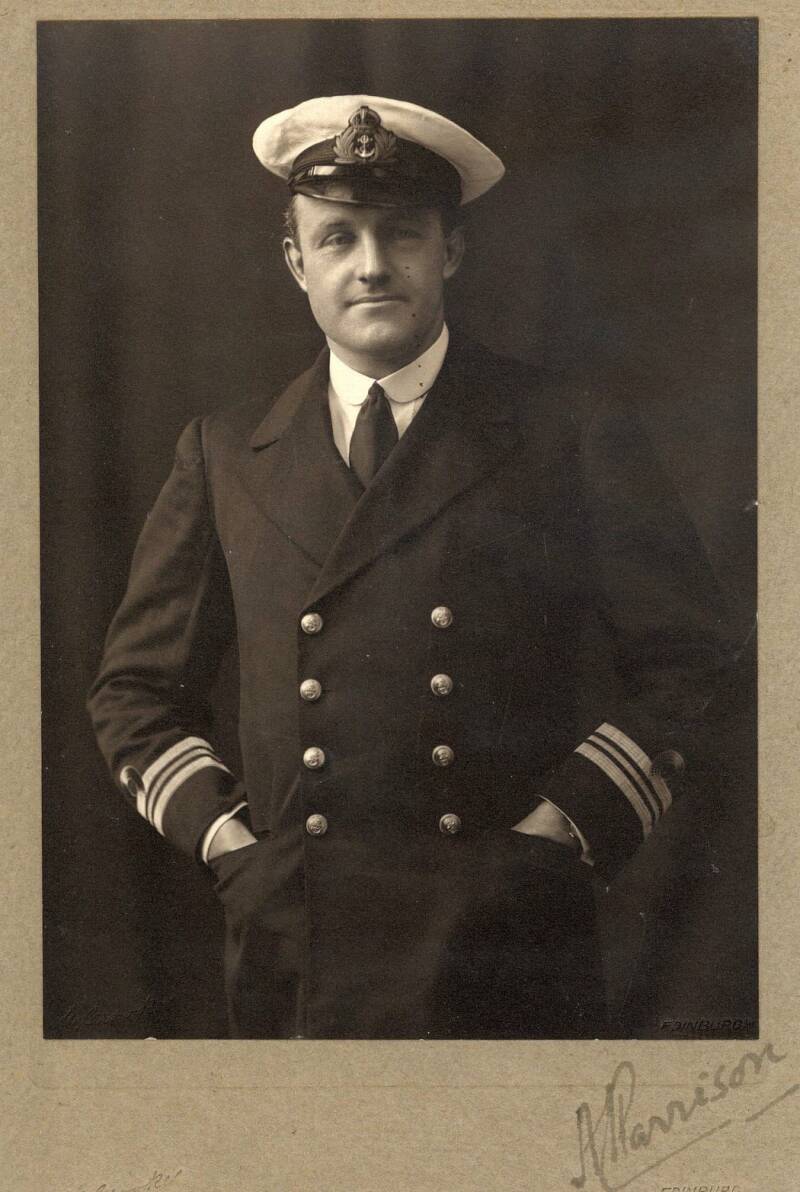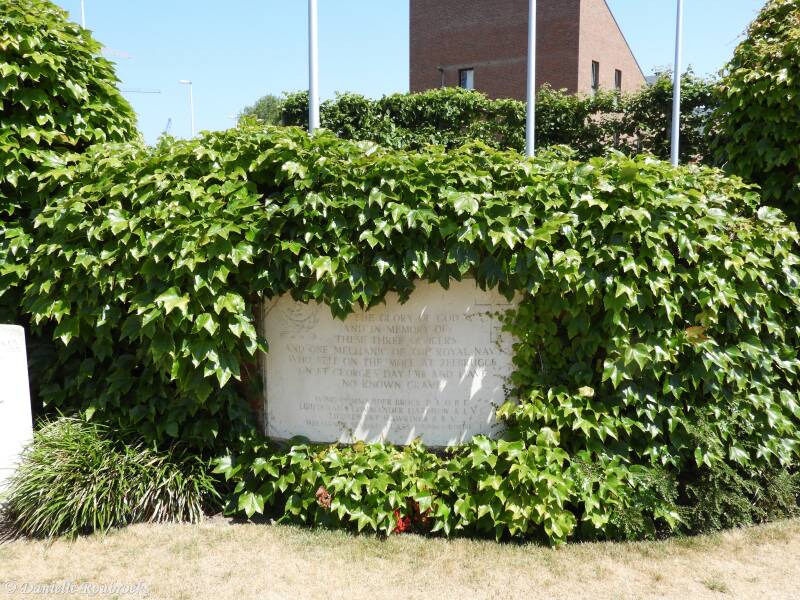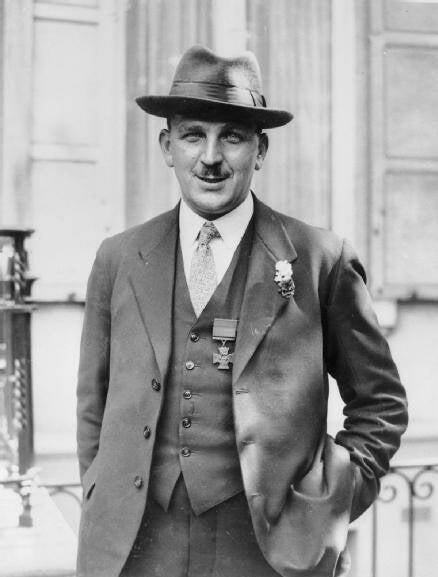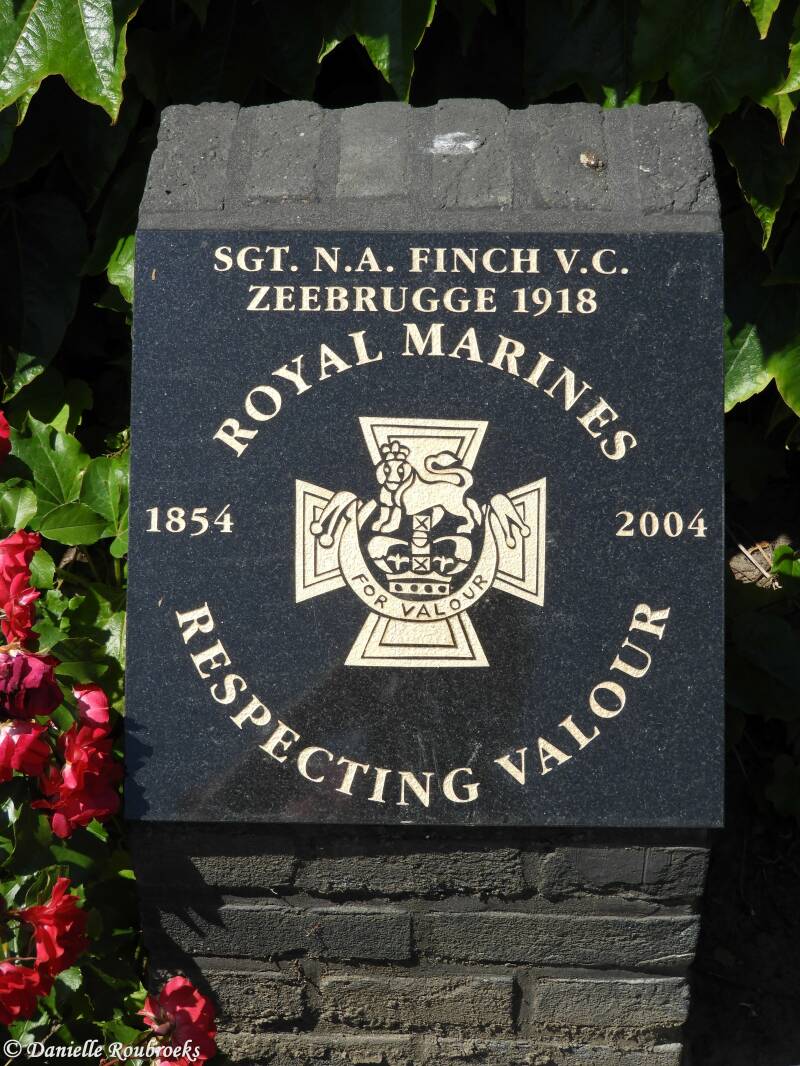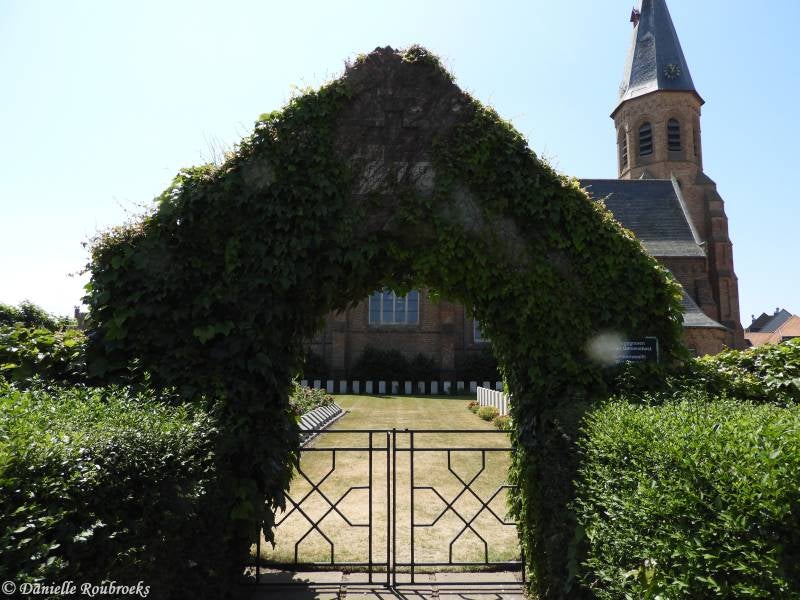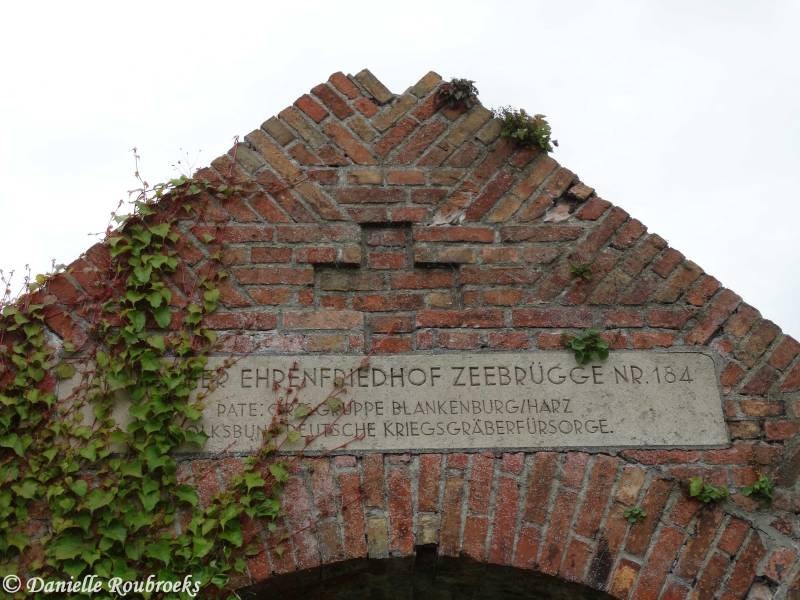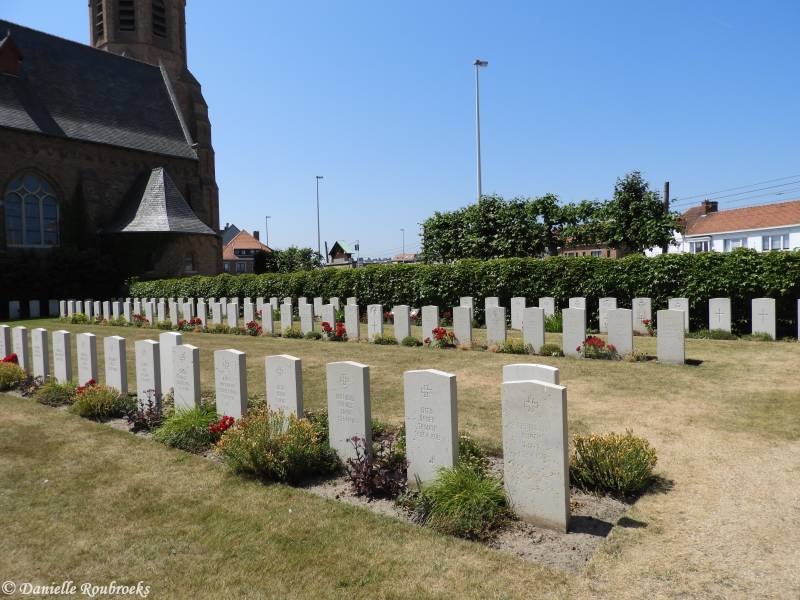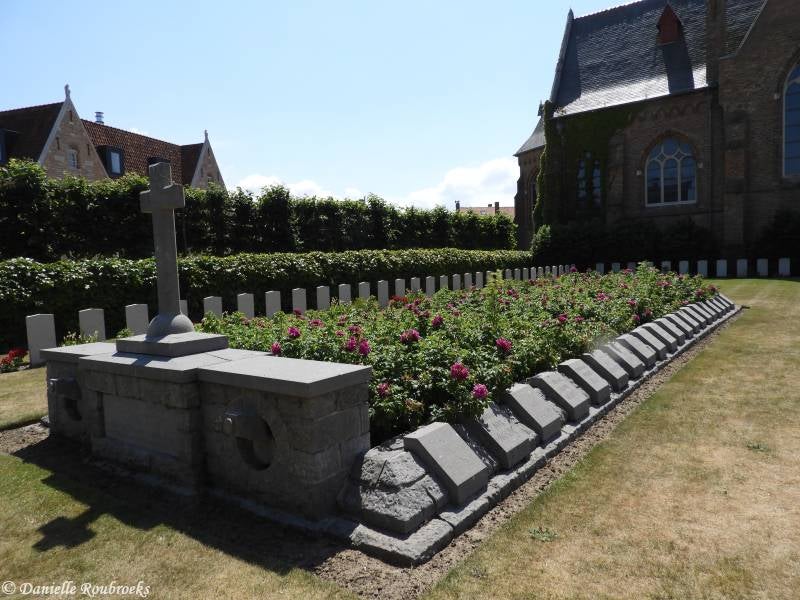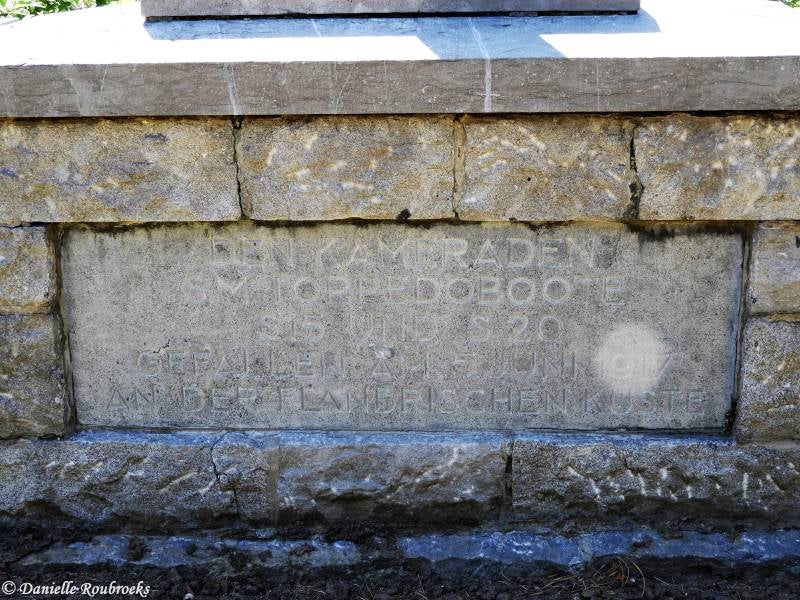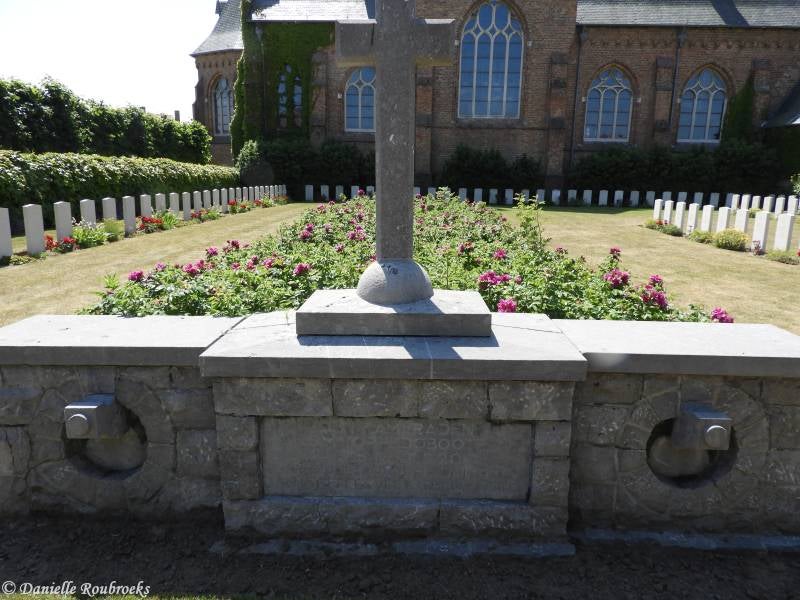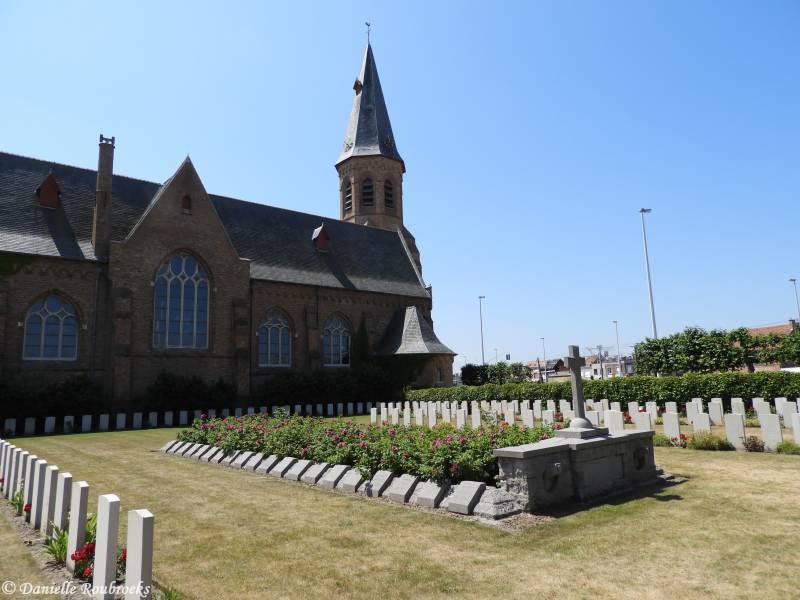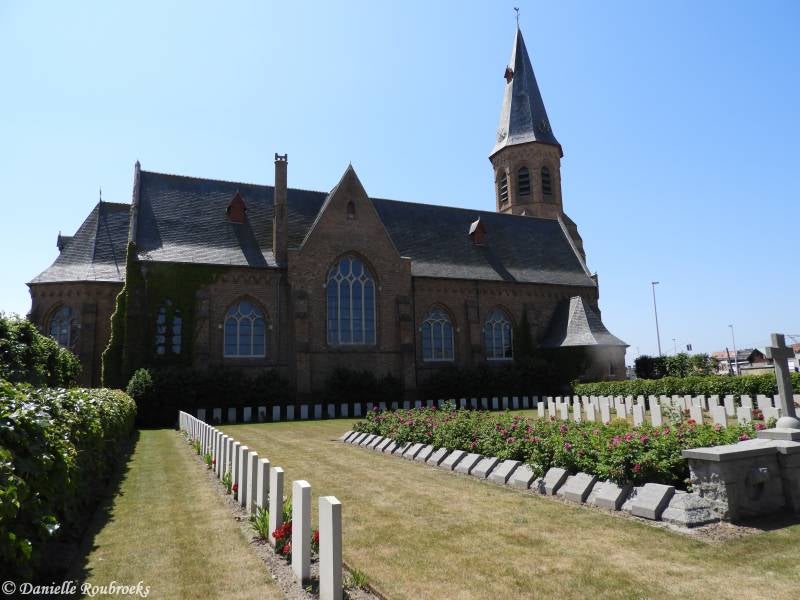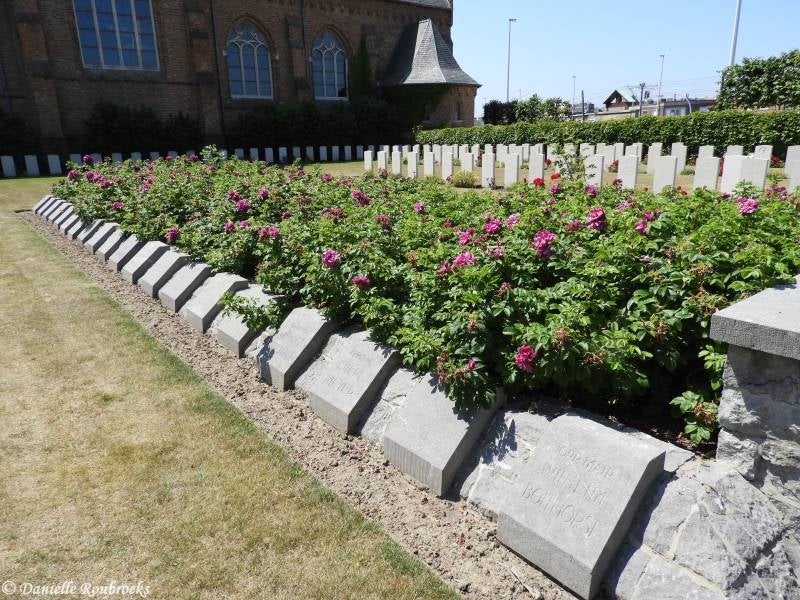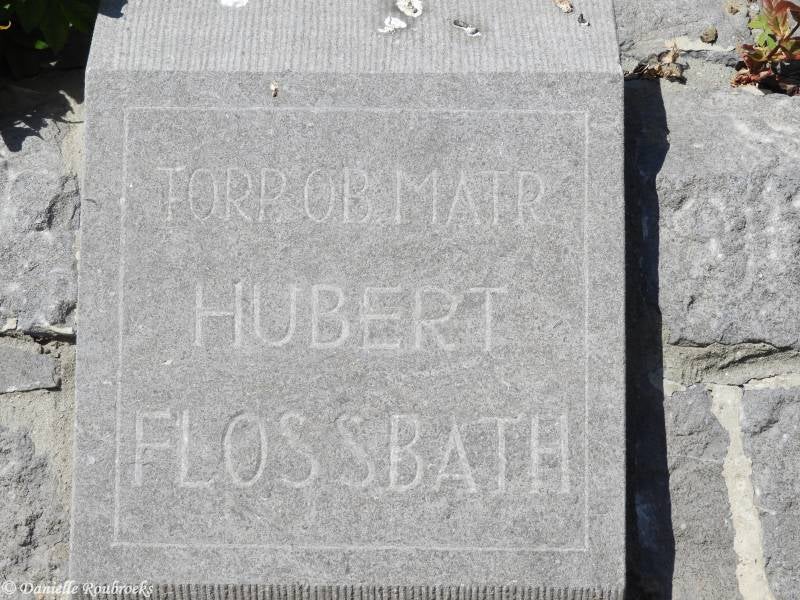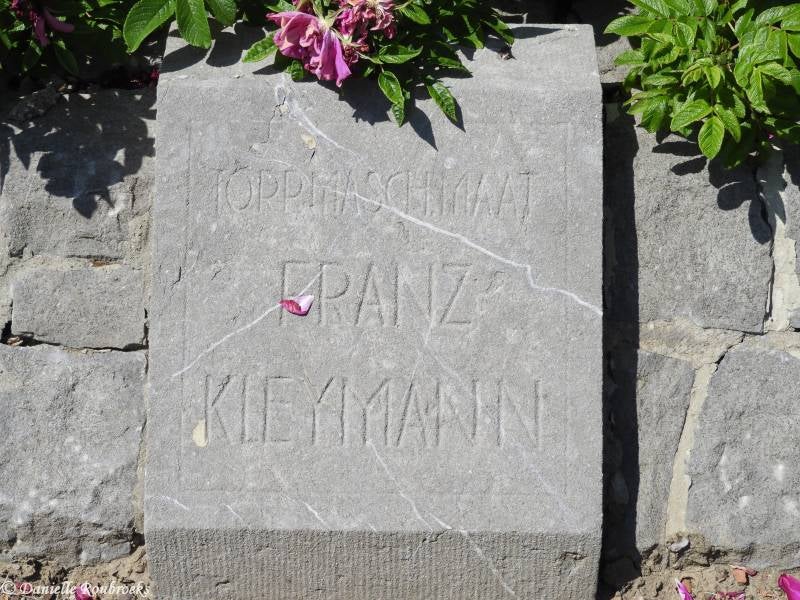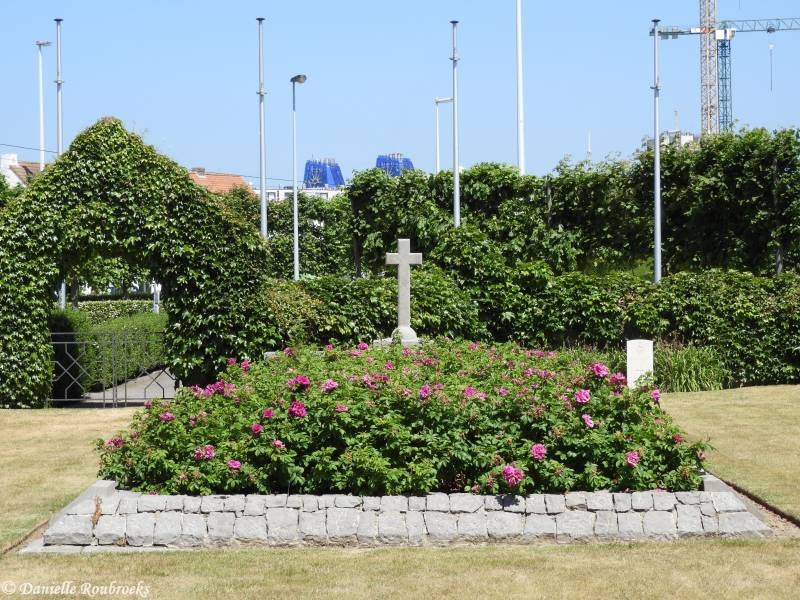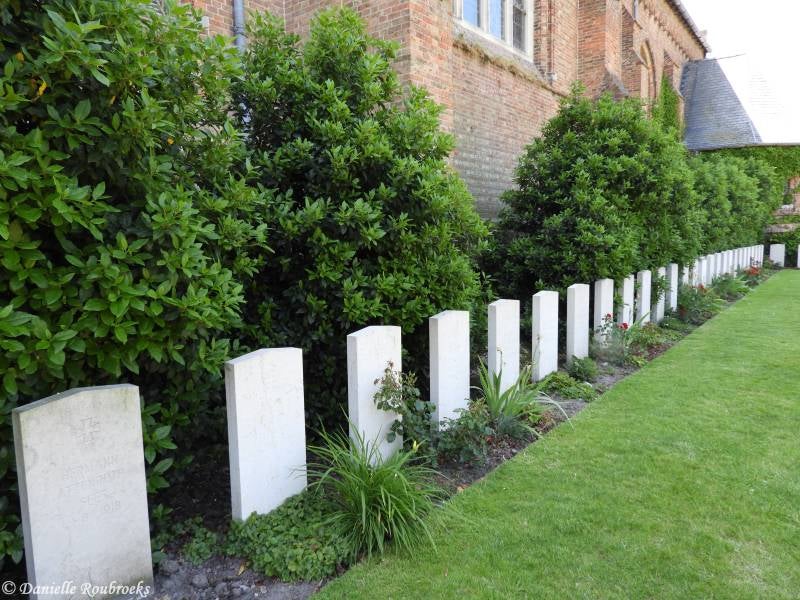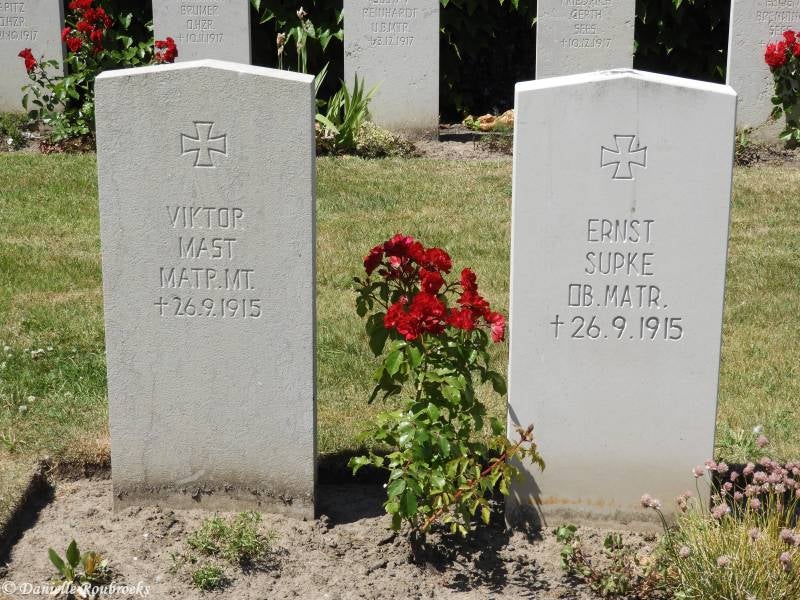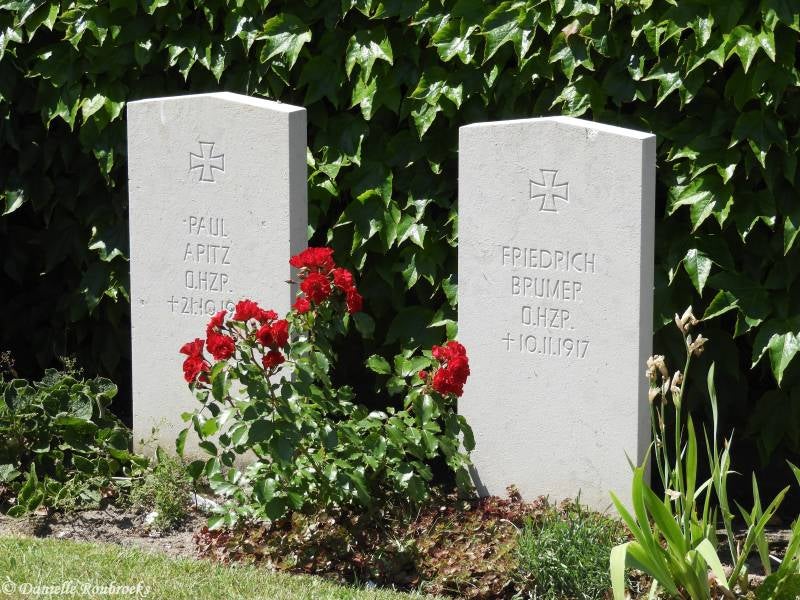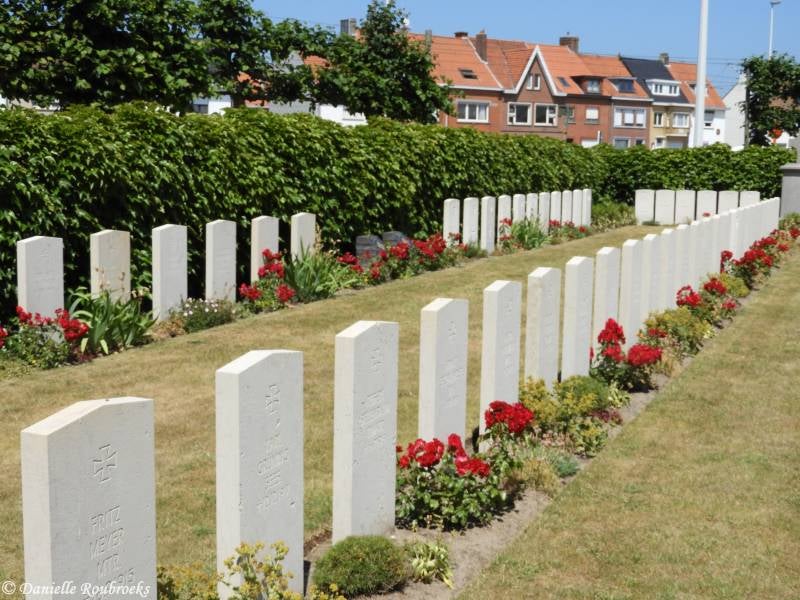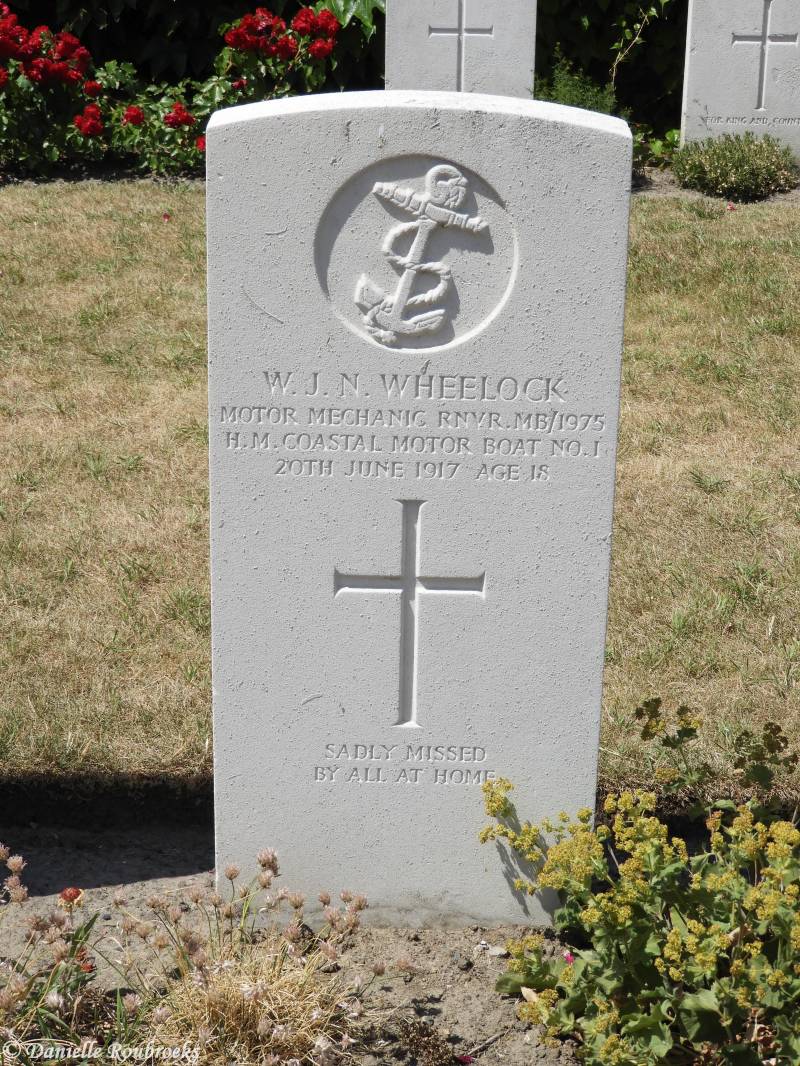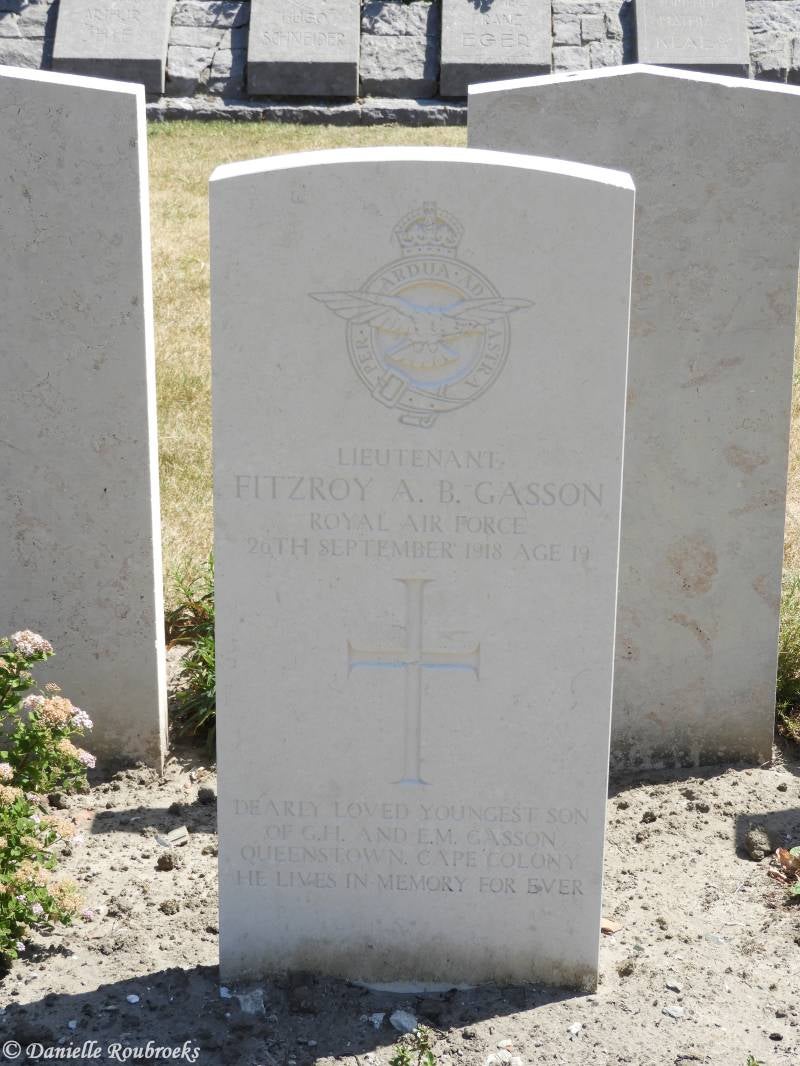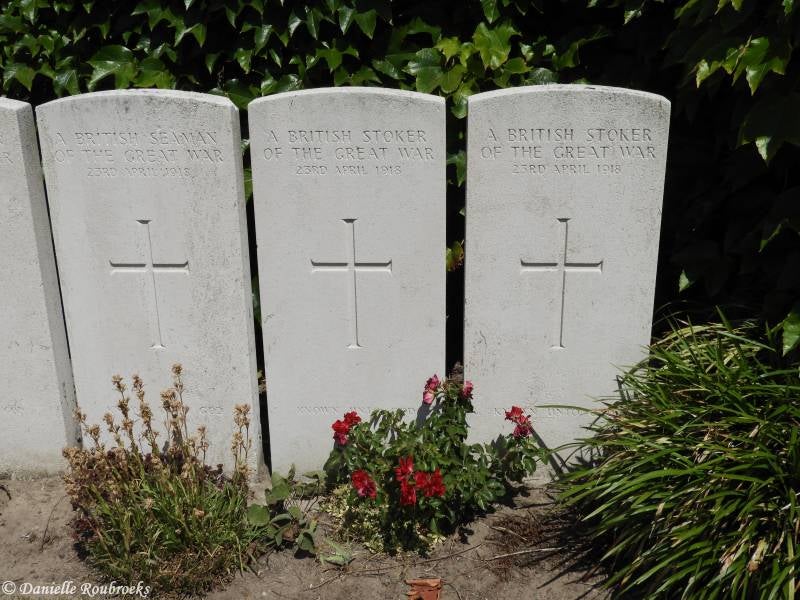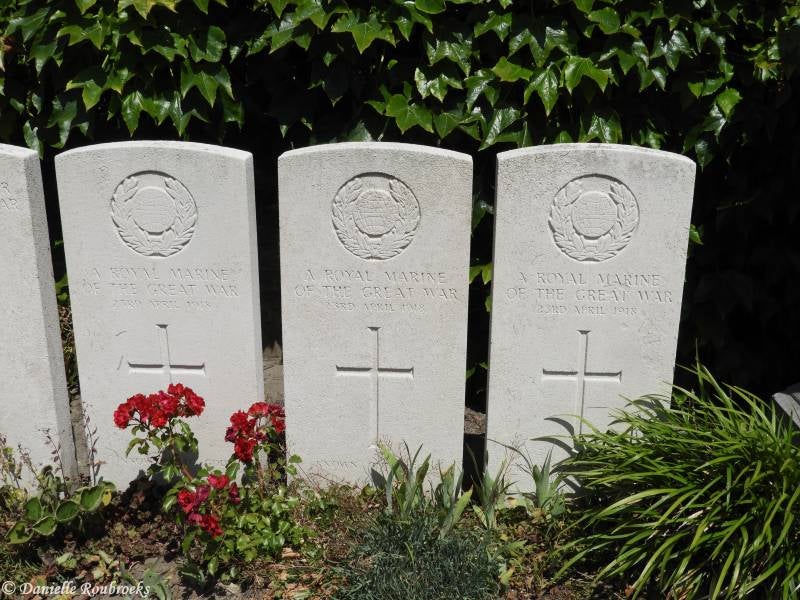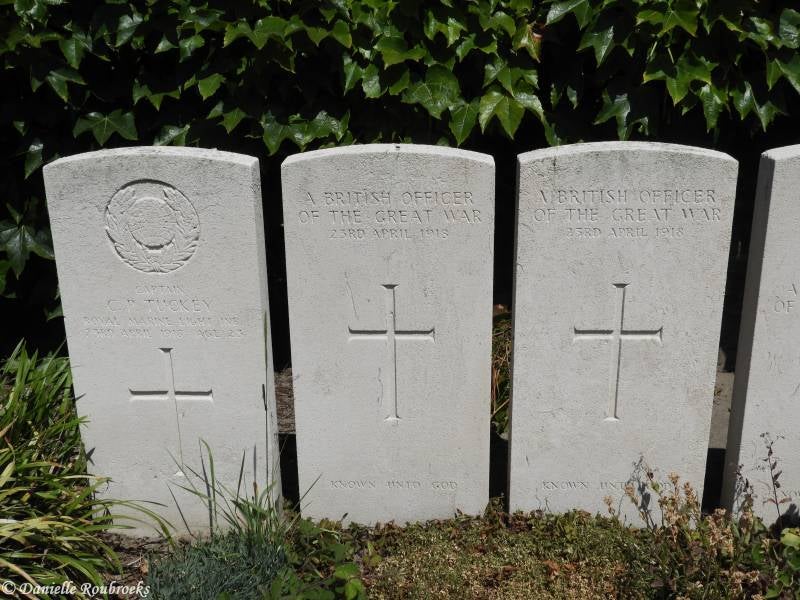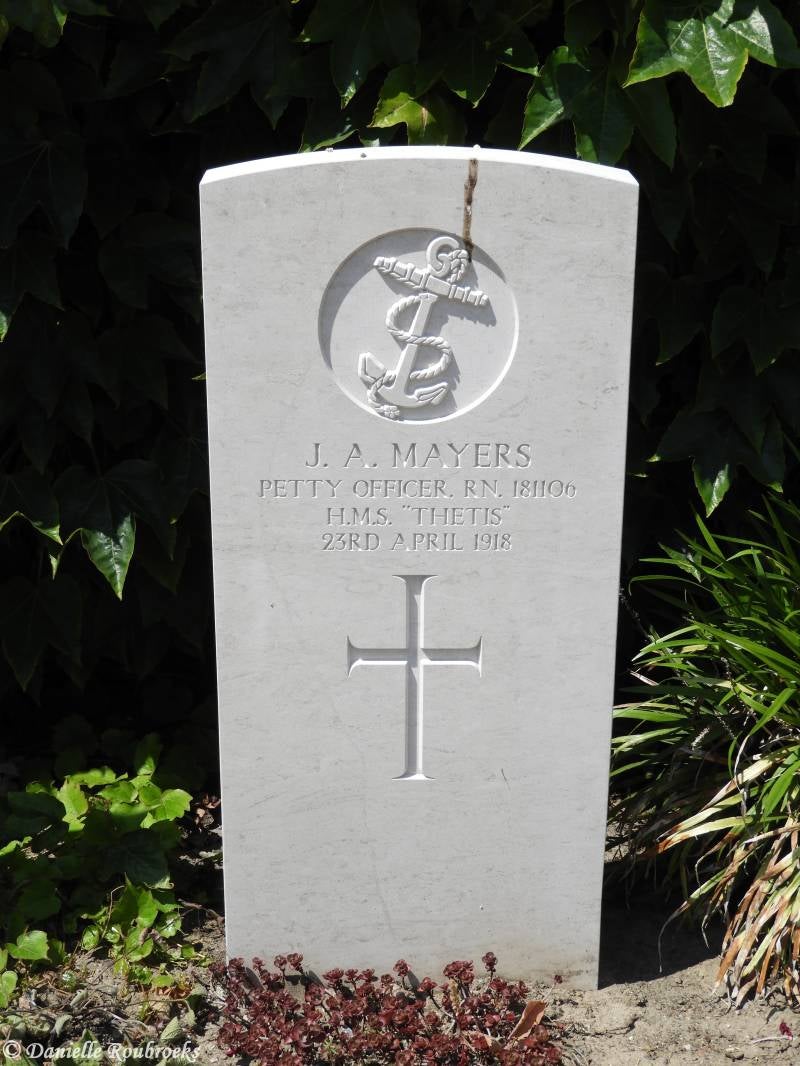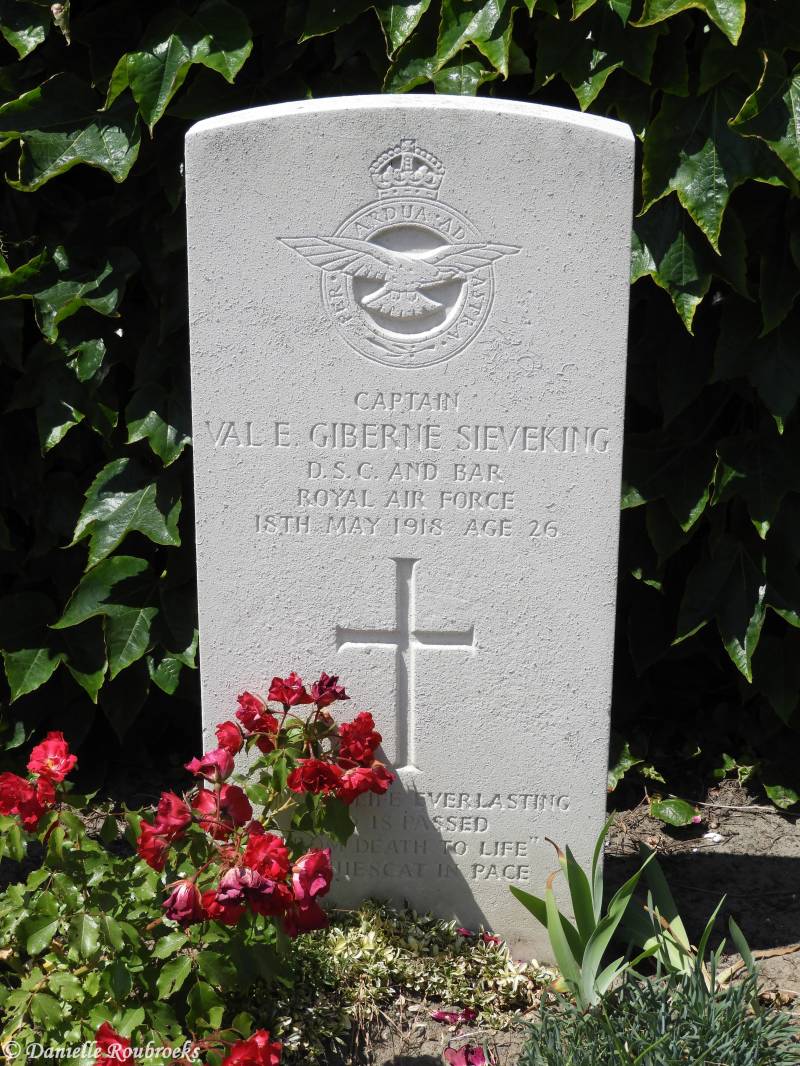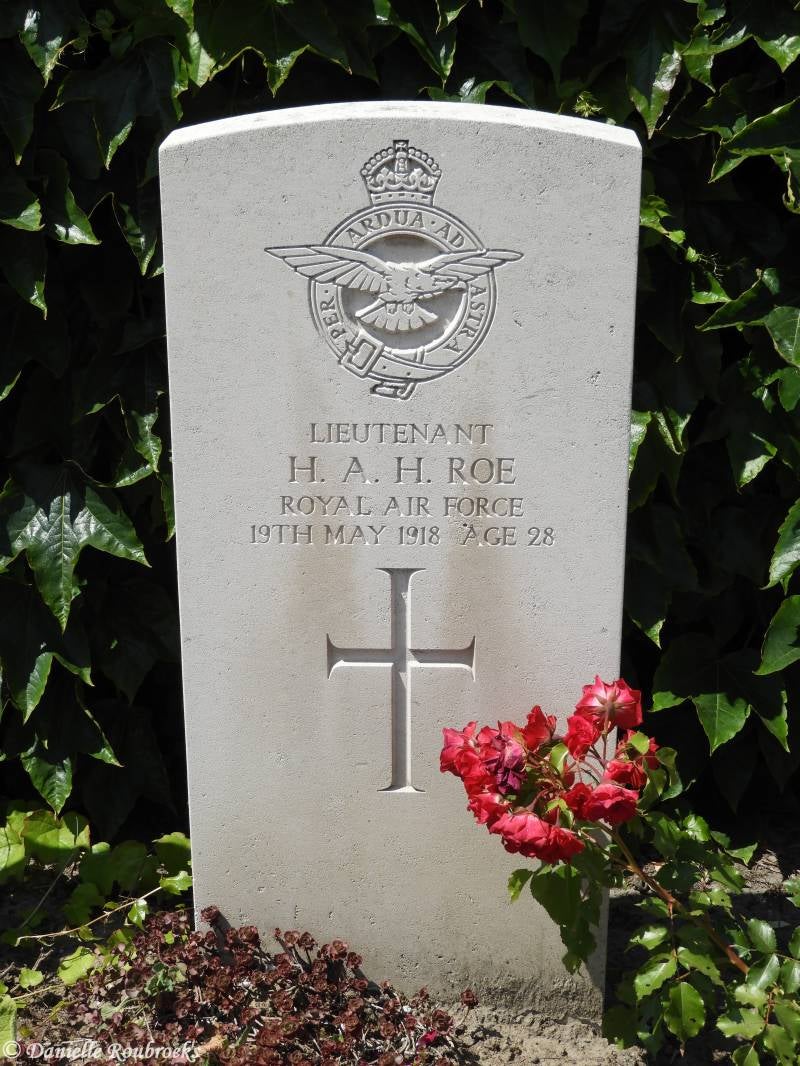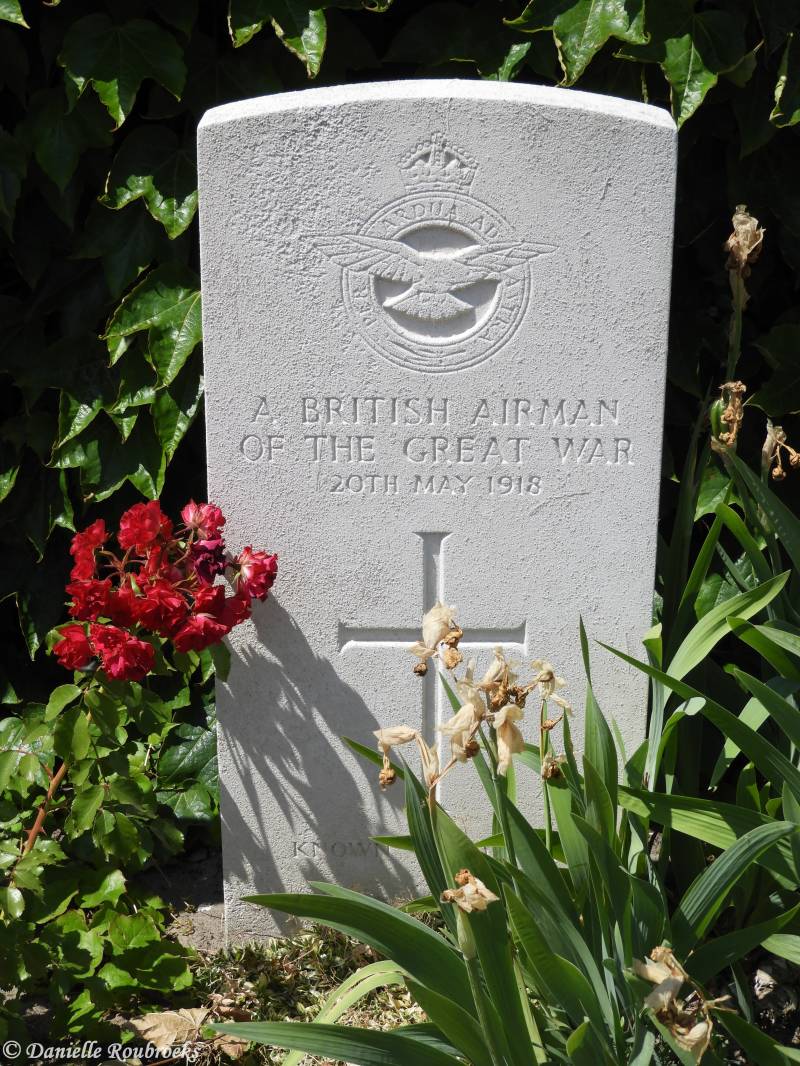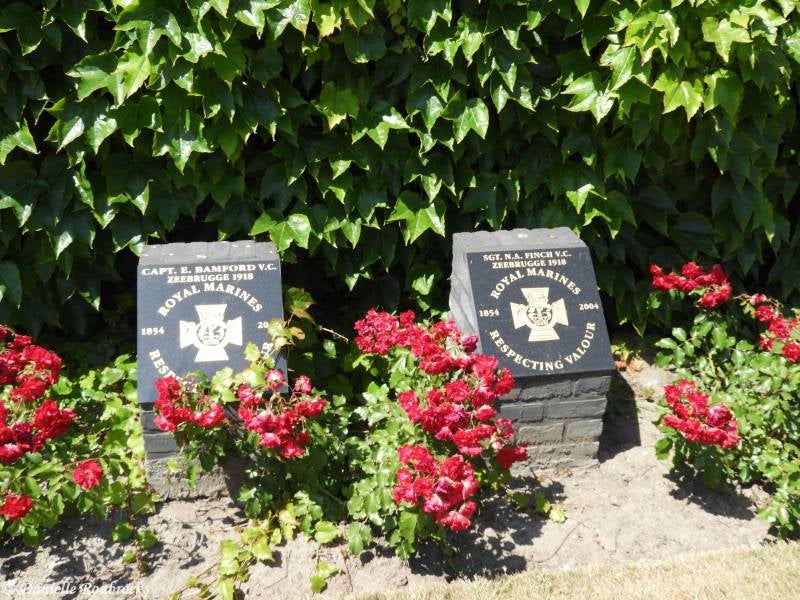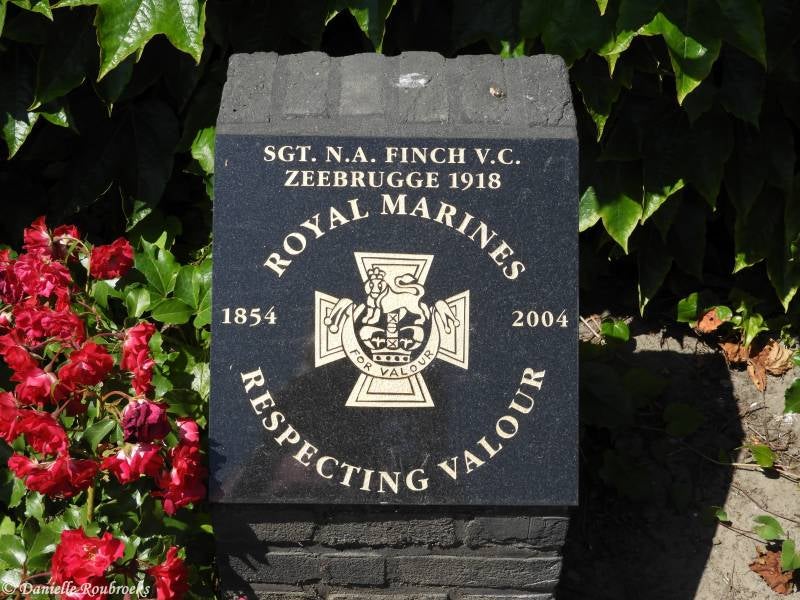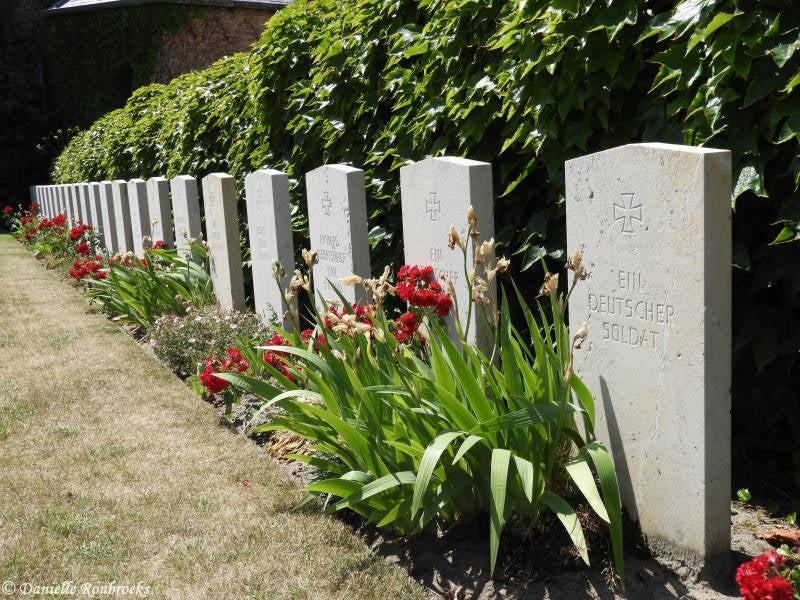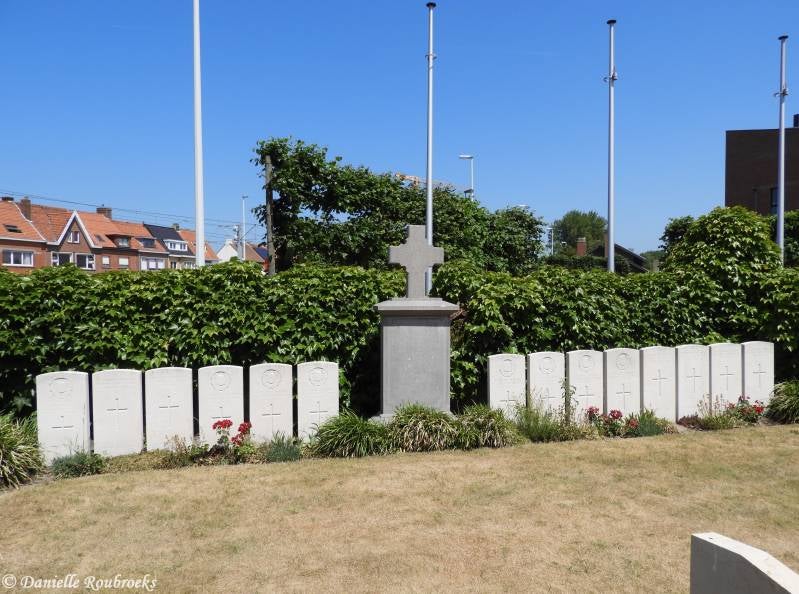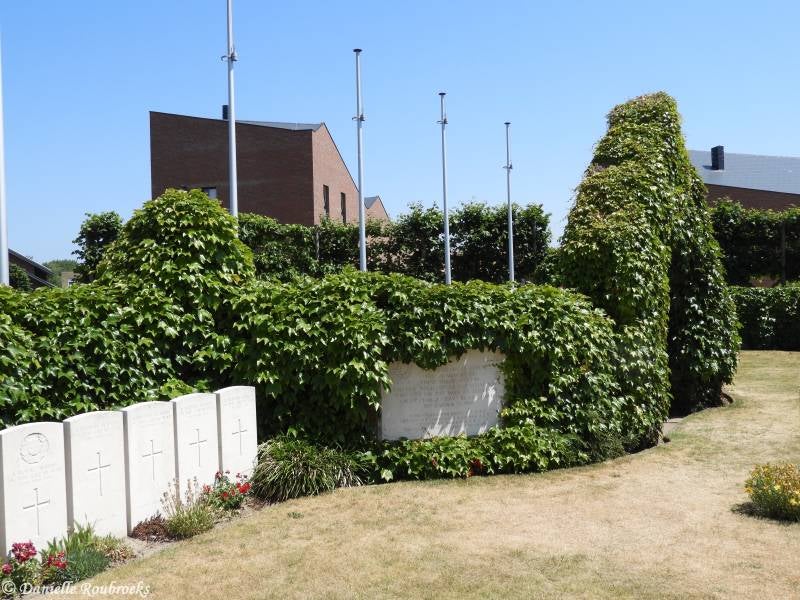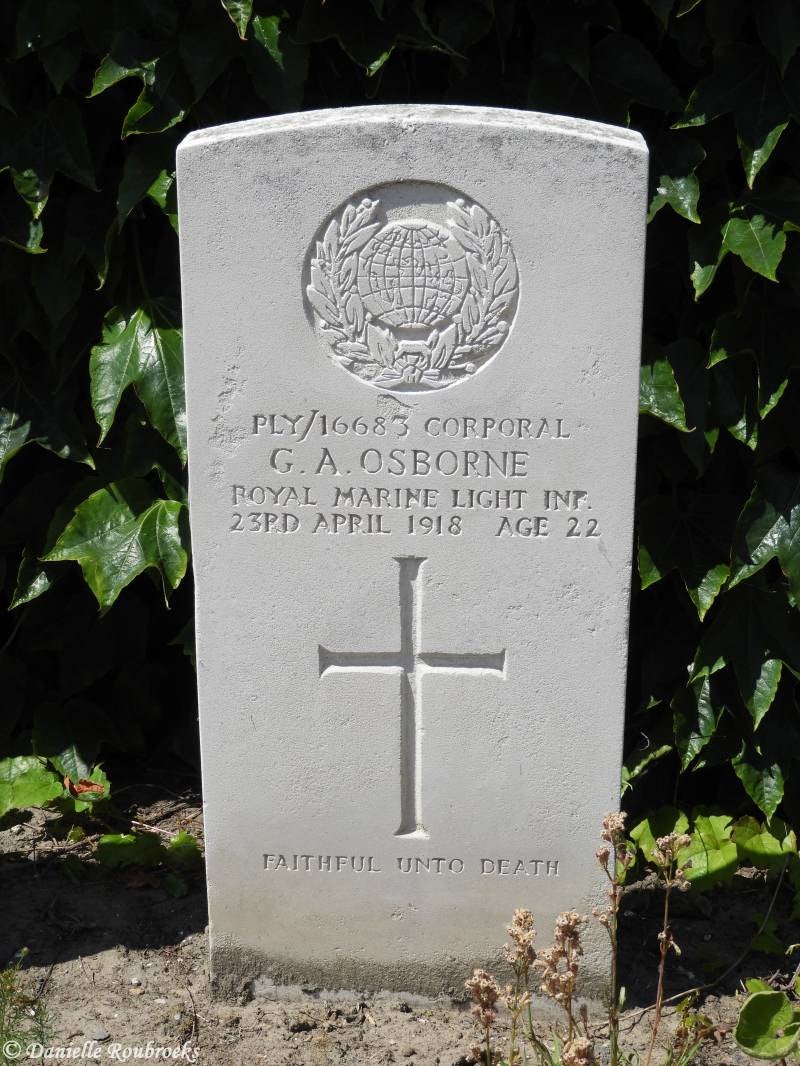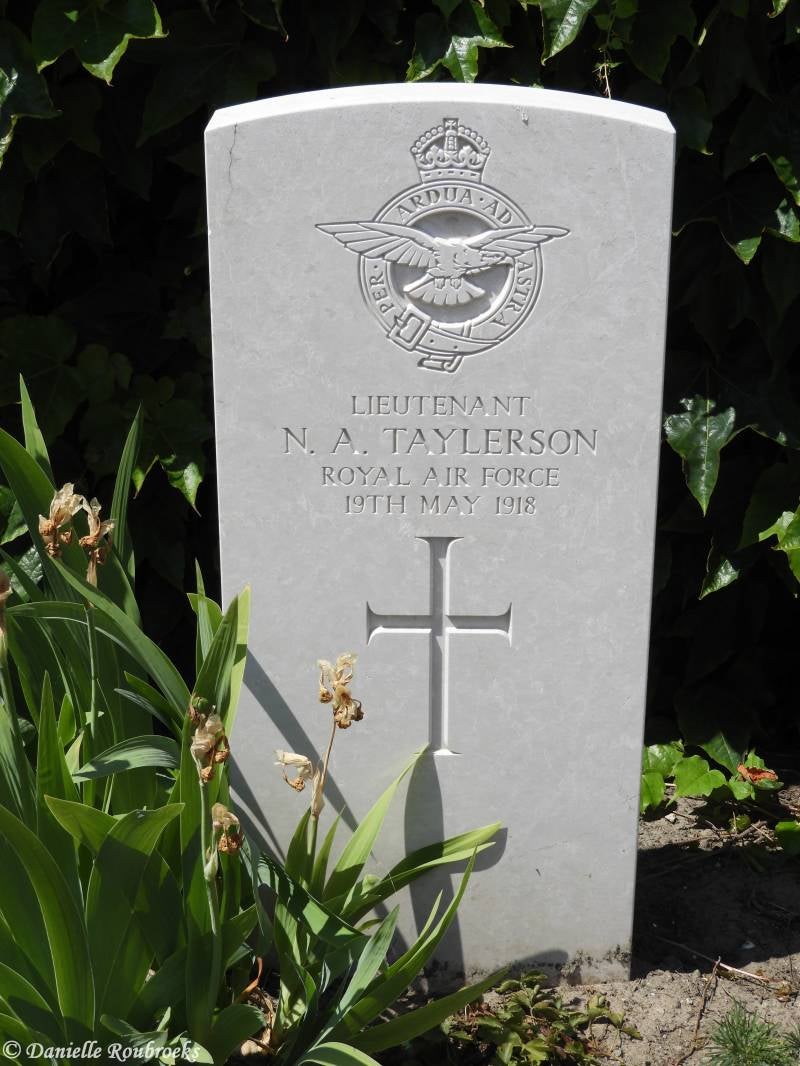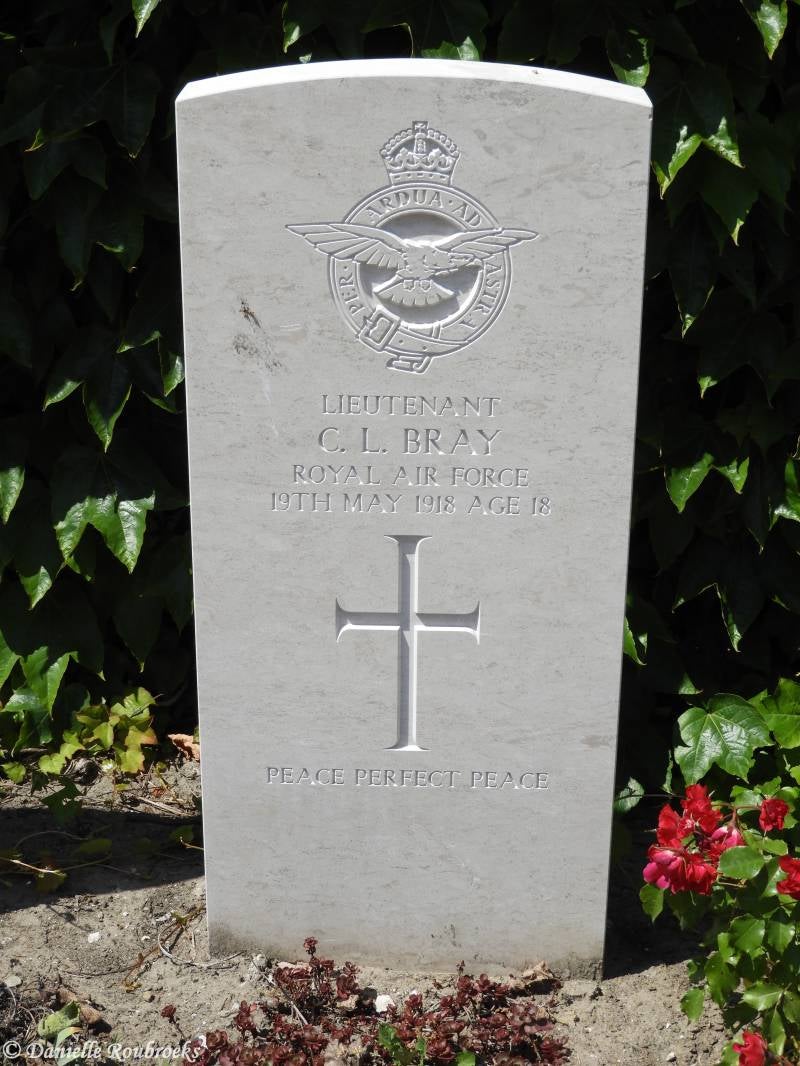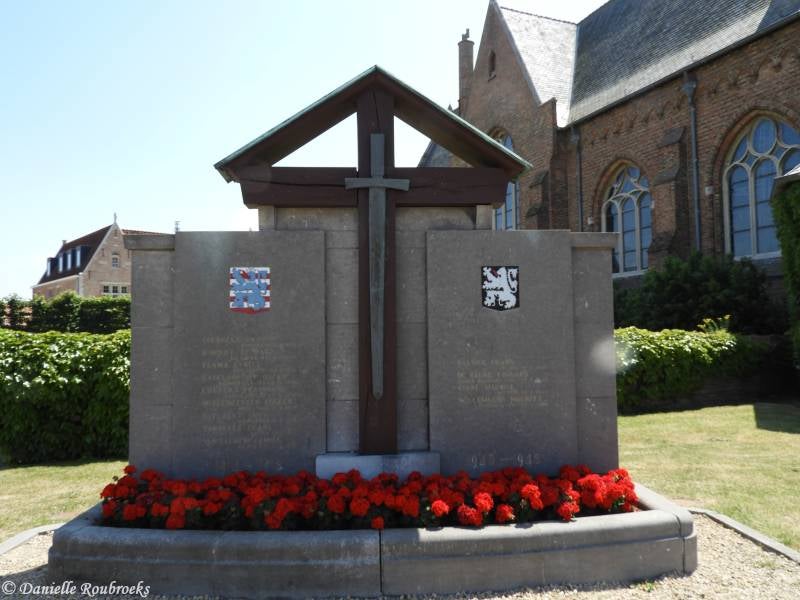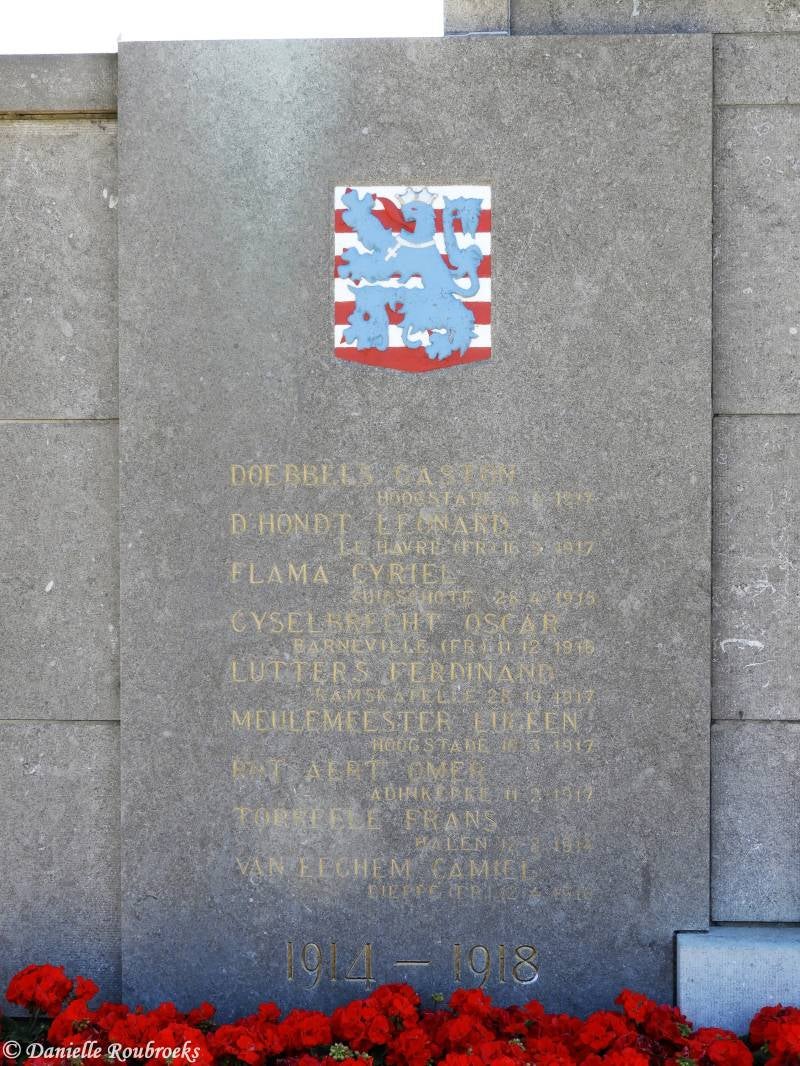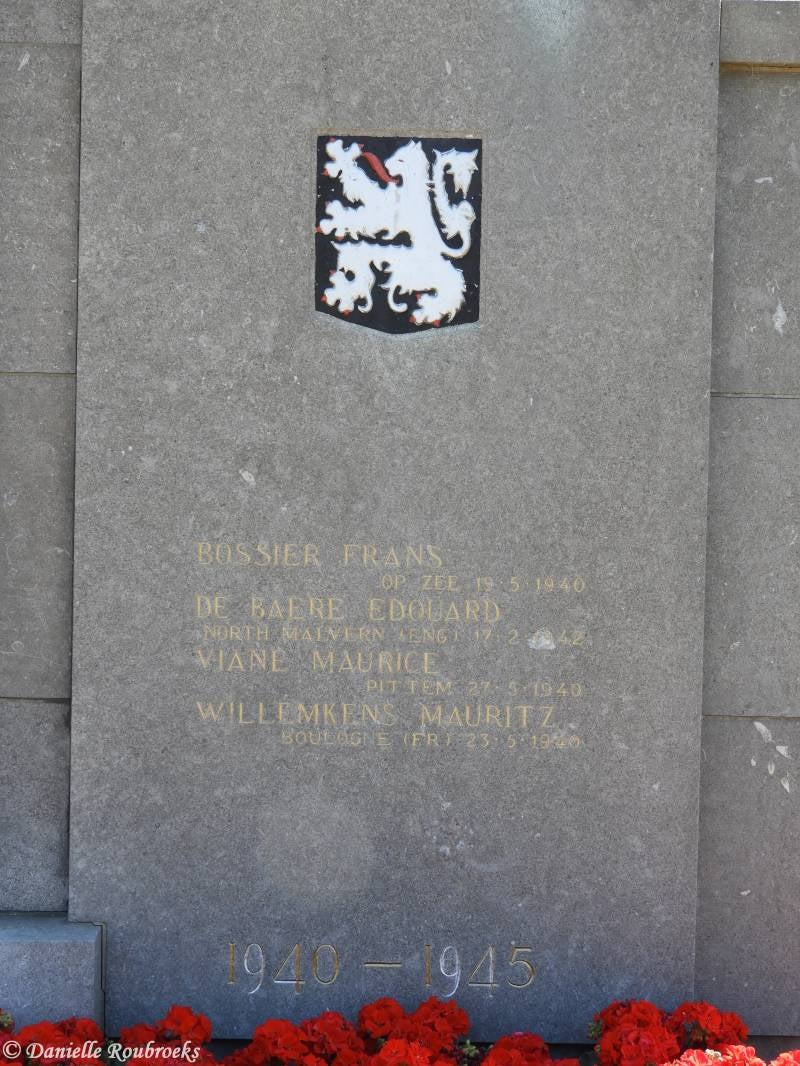Zeebrugge Churchyard and Memorial
History Information (Source: CWGC)
The port of Zeebrugge was used by the British Expeditionary Force in October 1914, and bombed by Commonwealth and French aeroplanes thereafter. On 23 April 1918, British sailors and marines, in a collection of monitors, destroyers, motorboats, launches, old cruisers, old submarines and Mersey ferry-boats attacked the mole at Zeebrugge and attempted to block the canal leading to Bruges and to the German submarine headquarters.
There are 30 Commonwealth servicemen of the First World War buried or commemorated in ZEEBRUGGE CHURCHYARD. 17 of the burials are unidentified but a special memorial commemorated an officer of the Royal Naval Air Service officer known to be buried among them.
Within the churchyard is the ZEEBRUGGE MEMORIAL It is a small stone panel set in the wall of the churchyard, and commemorates three officers and one mechanic of the Royal Navy who fell on the Mole at Zeebrugge on St George's Day 1918 and have no known grave.
Churchyard
Served with
· German (172)
· United Kingdom (13)
Served in
· Navy (161)
· Army (17)
· Air Force (7)
Memorial
Served with
· United Kingdom (4)
Served in
· Navy (4)
VICTORIA CROSS
Lieutenant-Commader Arthur Leyland HARRISON
H.M.S. "Lion." (H.M.S. "Vindictive," Zeebrugge Raid) Royal Navy
Died 23 April 1918 Age 32
Country of Service: United Kingdom
Awards: Victoria Cross
Citation
An extract from the "London Gazette," dated 14th March, 1919, records the following:-" For most conspicuous gallantry at Zeebrugge on the night of the 22nd-23rd April, 1918. This officer was in immediate command of the Naval Storming Parties embarked in 'Vindictive'. Immediately before coming alongside the Mole Lieut.-Commander Harrison was struck on the head by a fragment of a shell which broke his jaw and knocked him senseless. Recovering consciousness he proceeded on to the Mole and took over command of his party, who were attacking the seaward end of the Mole. The silencing of the guns on the Mole head was of the first importance, and though in a position fully exposed to the enemy's machine-gun fire Lieut.-Commander Harrison gathered his men together and led them to the attack. He was killed at the head of his men, all of whom were either killed or wounded. Lieut.-Commander Harrison, though already severely wounded and undoubtedly in great pain, displayed indomitable resolution and courage of the highest order in pressing his attack, knowing as he did that any delay in silencing the guns might jeopardise the main object of the expedition, i.e., the blocking of the Zeebrugge-Bruges Canal. "
Major Edward Bamford VC, DSO (28 May 1887 – 30 September 1928)
Bamford was 30 years old, and a captain in the Royal Marine Light Infantry, Royal Marines during the First World War when the following deed took place for which he was awarded the VC.
Captain Edward Bamford's Victoria Cross citation was published in the London Gazette, 23 July 1918:
“For conspicuous gallantry at Zeebrugge. April 1918. This officer landed on the Mole from "Vindictive" with Nos. 5, 7 & 8 platoons of the Marine Storming Force in the face of great difficulties. When on the Mole under heavy fire, he displayed the greatest initiative in the command of his company, and by his total disregard of danger, showed a magnificent example to his men. He first established a strong point on the right of the disembarkation, and when that was safe, led an assault on a battery to the left with the utmost coolness and valour. Captain Bamford was selected by the officers of the R.M.A & R.M.L.I detachments to receive the Victoria Cross under Rule 13 of the Royal Warrant, dated 26 January 1856.
Bamford died of pneumonia on 30 September 1928 aboard HMS Cumberland en route to Hong Kong, where he held the appointment of Instructor of Small Arms and Musketry Officer at Hong Kong.[5] He was buried in the Bubbling Well Cemetery in Shanghai. A 1930s photograph in the RM Museum shows a picture of his grave and headstone. All remaining cemeteries containing "foreigners" were destroyed in the Cultural Revolution. Bubbling Well Road Cemetery is now Jing'an Park.
Norman Augustus Finch VC, MSM (26 December 1890 – 15 March 1966)
Finch was 27 years old, and a sergeant in the Royal Marine Artillery, Royal Marines during the First World War when the following deed took place for which he was awarded the VC.
“On 22/23 April 1918 at Zeebrugge, Belgium, Sergeant Finch was second in command of the pom-poms and Lewis gun in the foretop of HMS Vindictive. At one period Vindictive was being hit every few seconds, but Sergeant Finch and the officer in command kept up a continuous fire, until two heavy shells made direct hits on the foretop killing or disabling everyone except Sergeant Finch who was, however, severely wounded. Nevertheless, he remained in his battered and exposed position, harassing the enemy on the Mole until the foretop received another direct hit, putting the remainder of the armament completely out of action. His award was by virtue of ballot.”
Finch retired with the rank of quartermaster sergeant in December 1929, though returned to the Portsmouth Division in 1938. He appears to have spent most of the Second World War as Quarter Master, serving as a Storekeeper Officer (Lieutenant) at 104 (Training) RM Brigade, R.M. Training Group Dalditch, then Devon. On 15 August 1945 he was released from service and in 1964 was made Divisional Sergeant-Major of HM Bodyguard of the Yeoman of the Guard. He died 15 March 1966.


